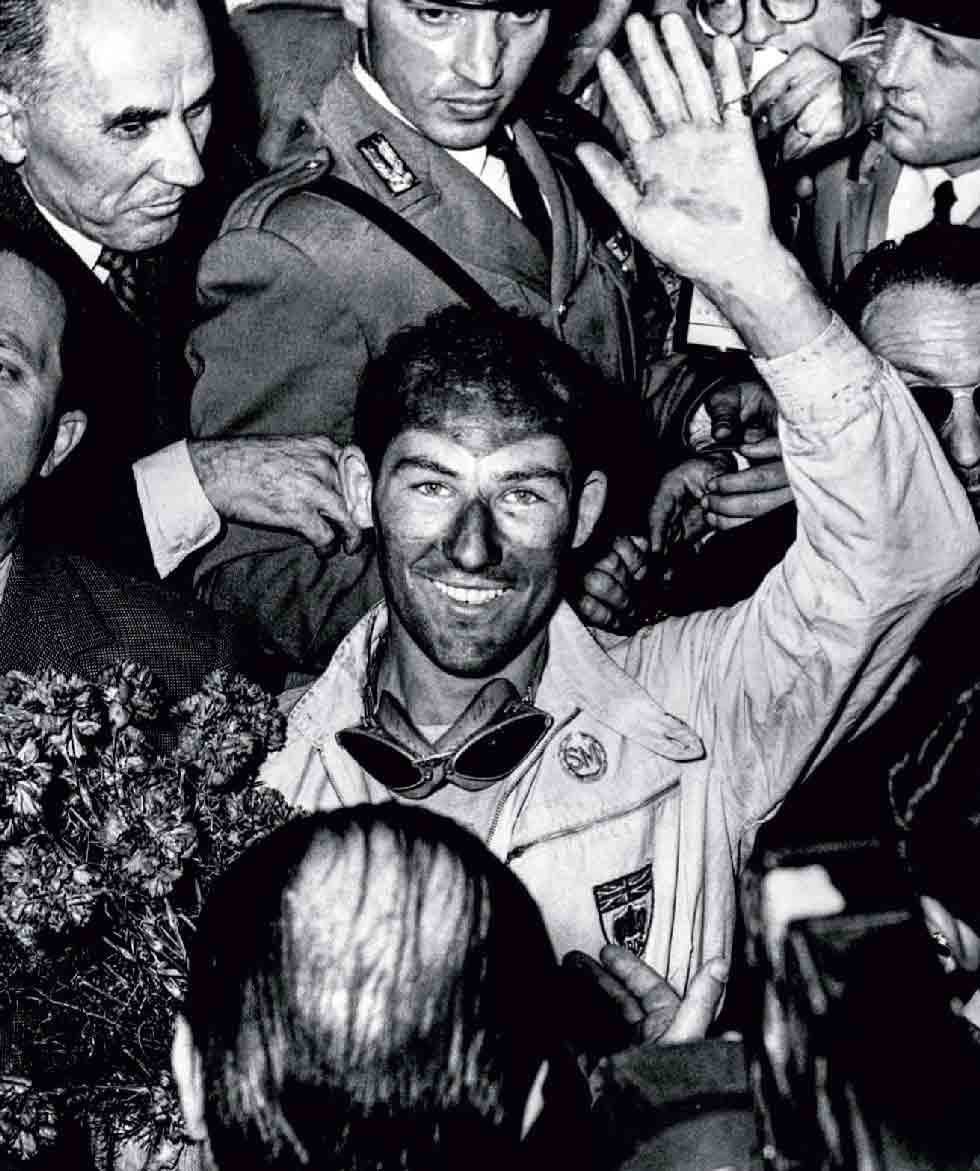‘Who do you think you are?’ So synonymous with driving fast that he entered the patronising police vernacular, Sir Stirling Moss has passed away. These are the seven pillars that built the man’s legend.
Legend. Hero. An inspiration. When Sir Stirling Moss passed away on Easter Sunday, plenty of superlatives were used to eulogise him, and all were fitting. Moss was one of the few sportsmen to transcend his chosen field, as known to the wider world as Woods, Federer or Bolt, even decades beyond his active career. He wasn’t just admired by petrolheads either – he was the wider world’s hero too. Here’s why.

1 THE FIRST REAL PRO
Moss was barely into his 20s when he began his professional racing career (the nickname ‘Boy Wonder’ would stick with him), but in mentality and approach he was arguably the sport’s first professional driver. One of the first to take fitness seriously and to cultivate his own brand, endorsing commercial products, he shifted F1 from gentleman’s hobby to professional sport. In fighting spirit as well as tabloid fame, he was a prototype Lewis Hamilton, six decades earlier.
2 EVER THE UNDERDOG – DELIBERATELY SO
Moss’s name is invariably followed in the same breath by the phrase the ‘greatest driver never to win the world championship’. He was runner-up four times, largely by dint of bad luck and the patriotic preference for racing British cars, often for independent teams, for the satisfaction of beating overseas factory squads. ‘I’d rather go down in history as the man who never won it,’ he later said, always prioritising race wins over points-building. Under the modern scoring system, he would have lifted the crown.
3 HE HAD TO QUIT TOO SOON
Moss was 32 when he suffered the violent (and still unexplained) accident that ended his racing career at Goodwood in 1962, but had planned to continue racing into his 50s – ‘I loved it far too much to quit,’ he later said – and felt he was still maturing as a driver.
Think of the career he, and we, missed out on: a head-to-head with Jim Clark for F1 supremacy in the rest of the ’60s, adapting to downforce and monocoques as he already had to mid-engined cars; another crack at the Le Mans win that previously eluded him (perhaps in a Gulf Porsche 917, who knows…).
4 ENZO FERRARI BEGGED HIM TO DRIVE
‘I need you: tell me what kind of car you want and I will make it for you in six months,’ Enzo Ferrari, rarely a man effusive with praise, reportedly told Moss. It was an unprecedented deal: Moss would race a Ferrari in F1 for ’62, with Enzo’s blessing but run by Rob Walker’s independent British team, in dark blue rather than red. Ironically, he would have been racing the Ferrari the day of his accident at Goodwood were its delivery not delayed.
5 SUPERHUMAN SKILL
Moss’s 1955 Mille Miglia win – a 1000-mile dash down Italy on closed public roads in Le Mans-spec racers – is still spoken of in hushed tones. Averaging 98mph for the entire race (and 123mph over the final stage, including stopping to have the route card stamped), topping 170mph at times (not always on all four wheels), he later described it as one of the most frightening experiences of his life.
Or there was the 1961 Monaco Grand Prix win in an underpowered Lotus against the collective might of the Ferrari team’s Sharknoses, driving at front-row qualifying pace for three hours. Or winning at the Nürburgring in the wet the same year by more than 20 seconds. Or…
6 THE SPORTSMANSHIP
Moss could have been champion in 1958 (in a British Vanwall to boot) when his title rival Mike Hawthorn was disqualified for an alleged transgression. Moss appealed on Hawthorn’s behalf, the Ferrari driver was reinstated, and would take the title by one point.
Moss’s own hero was his 1955 team-mate, Juan Manuel Fangio. ‘If he were to come out of retirement maybe I would beat him,’ Moss said in the ’60s, ‘but it wouldn’t please me because he is my idol. I am not better than Fangio.’
7 AN ALL-CONSUMING LOVE OF DRIVING
Moss continued racing in historic events into his 80s, and retained an equally flat-out working diary. Not even breaking both ankles in a three-storey fall at his London home in 2010 could slow him down; he returned to the grid at Goodwood a matter of weeks later. ‘Movement is tranquillity’ was Moss’s motto. It’s a good one.
Moss in the zone in a Lotus 18 at Zandvoort, 1960. Moments after his Mille Miglia win and already passing into sporting legend.





